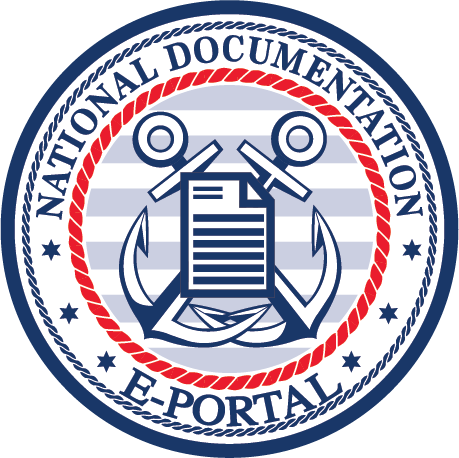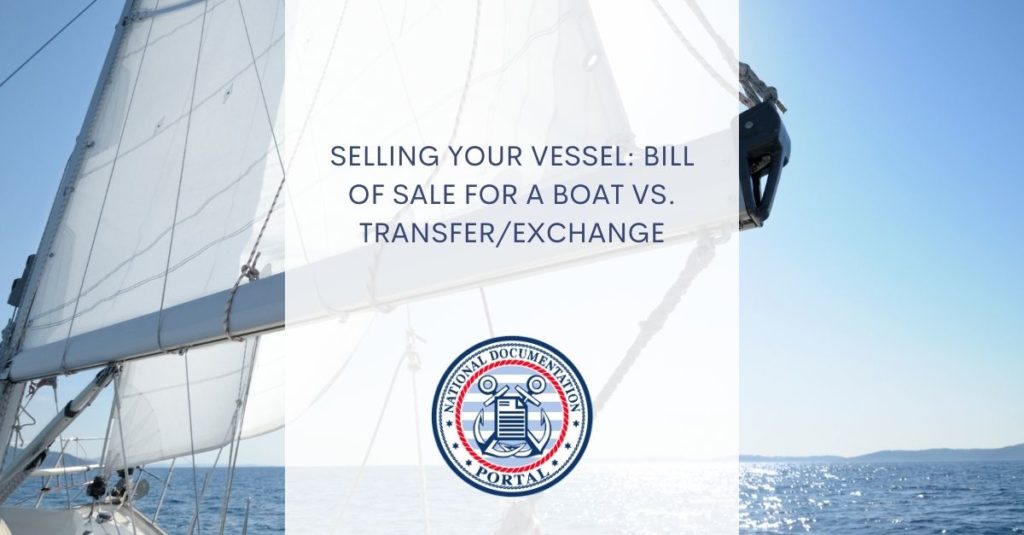Do you have a vessel that isn’t documented with the US Coast Guard and want to sell it? Here at the National Documentation Portal, we offer documentation for USCG documented vessels. If you’re going to sell one of those, the “Transfer/Exchange” form at our site is what you’re looking for. However, if your vessel is undocumented, then you’re going to want a bill of sale for a boat. We can help there, too. While we may not have this form at our site, we can help you put one together.
If you’re looking to sell your vessel, navigating the process of transferring boat ownership is paramount. Prior to parting ways with your prized boat, it is imperative to adhere to certain steps to facilitate a smooth sale. By meticulously following these procedures, you can streamline the process of drafting a comprehensive bill of sale for your boat.
What a Bill of Sale for a Boat Should Include
Once you’ve found a buyer and agreed on a sale price, it’s time to create a comprehensive bill of sale. This document includes important details of both the seller and buyer, serving as proof of boat ownership transfer. It should list Hull Identification Numbers (HINs), International Registration Plan (IRP) numbers, state registration numbers, engine year, make, model, and serial numbers.
Include names and contact info of both parties for a formal transaction. While disclosing the purchase price can aid negotiations, it’s not always required by law. Compliance may be necessary for certain vessel types. Note: our site doesn’t have a specific “bill of sale” form. This blog equips vessel owners with the tools to create their own.
Next Steps
Following the meticulous compilation of requisite information, obtaining the seller’s signature and date on the bill of sale is imperative. This crucial step formalizes the agreement and safeguards the interests of both parties involved.
Ensuring the presence of the seller during the signing of the bill of sale is essential to mitigate the risk of fraudulent activities and ensure the accuracy of the information provided. Additionally, maintaining a meticulous record devoid of errors minimizes the likelihood of encountering complications in the future, thereby fostering a seamless transition of ownership.
Concluding the process entails generating two copies of the executed bill of sale, one for each party involved in the transaction.
Each copy should bear a distinct identification number in the top right corner to unequivocally establish parity between the parties. This precautionary measure serves to corroborate the mutual acceptance of the transaction’s terms and acts as a safeguard against potential disputes regarding the sale’s legitimacy.
Tip: use high-quality paper for duplication purposes is recommended to fortify the authenticity of the documents, thereby enhancing their admissibility as evidence in legal proceedings if necessary.

Meeting the Legal Obligations for Documentation Transfer
The above covers the sale of undocumented vessels. If your vessel has been documented with the USCG, then, to sell it, you’re going to need a Transfer/Exchange form.
To comply with legal requirements, one must complete the transfer of documentation forms and provide necessary evidence. This is mandatory in various situations, like ownership changes in the vessel, incorporation of the vessel ownership by another entity, modifications in the vessel’s name or home port, adjustments in the vessel-owning partnership, and other scenarios.
Additionally, the certificate of documentation might become invalid due to events like the demise of a partial owner, changes in vessel tonnage, or shifts between self-propelling and non-propelling status. Changes in ownership or significant certification errors also necessitate applying for new documentation.
Submission Evidence Needed for Transfer/Exchange
When applying for documentation alteration, submission of pertinent evidence is imperative. This includes the current certificate of documentation bearing the seller’s signature, duly notarized. If a lien is present on the vessel, it is mandatory to complete the Satisfaction of Mortgage form, which must be signed by both the owner and the lending institution.
An Easier Way to Fill Out This Form and Others
Effectively navigating the complexities of transferring boat ownership requires a meticulous process, culminating in the preparation of a comprehensive bill of sale. By diligently following these steps and ensuring legal compliance, boat owners can smoothly transition ownership, embarking on a new chapter with confidence and peace of mind.
The Transfer/Exchange, while popular, is just one of the forms that we offer at our site. There are many others.

